Last Updated on September 8, 2025 by Michelle
Without fail every time I mention milling flour, choosing/using a grain mill, or wheat berries over on Instagram, I get tons of questions, specifically about choosing the right wheat berries. And I get it.
Milling flour is an age-old phenomenon, but turning wheat berries into flour in our own kitchens is a brand-new concept for most of us. (Hello, me a few years ago! I used to be completely confused and overwhelmed with topics about fresh milled flour.)
Wheat berries can be confusing. When I first started choosing what wheat berries to purchase and mill, I had the same questions you guys ask me. So let’s talk about choosing wheat berries and how choosing the right wheat berries can make your home milling journey so much smoother.
What wheat berries can I mill into flour?
In short, almost all of them. Be sure to check with your grain mill’s manual to make sure, but any reliably-sourced wheat berry should be fine to mill in your home grain mill, including but not limited to:
- Hard red/hard white wheat berries
- Soft red/soft white wheat berries
- Einkorn, Kamut/Khorasan, Spelt, and other ancient grains
- Hulled barley
- Oat groats (NOT oatmeal)
- Alternative grains like teff, quinoa, buckwheat, sorghum, millet and amaranth
- Rye berries
- Durum
- & many more
What wheat berries are best for sourdough bread?
Fresh milled sourdough bread can be tricky. Baking bread with fresh milled flour is tricky enough in itself, and when you throw the unpredictability of sourdough into the mix, we’re talking about an uphill battle! But I’ve found the most success with sourdough when I used hard red wheat. While it’s not at all wrong to use hard white wheat in sourdough, I’ve found that hard red actually helps develop an even stronger dough and softer bread in the end.
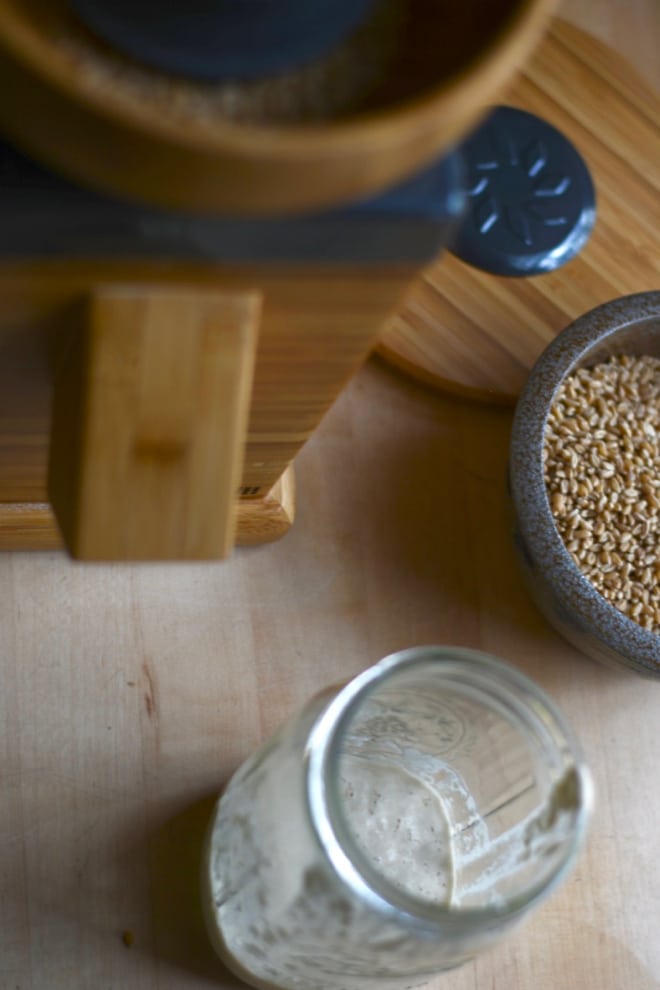
Choosing the right wheat berries: What wheat berries should I use to feed my sourdough starter?
When I switched my sourdough starter over to fresh milled flour I was feeding it exclusively hard white wheat flour. Although there’s nothing wrong with feeding your starter with hard red or hard white wheat (in fact, it’s recommended by many), my starter was really sluggish and hard to get active back then.
Switching my sourdough starter to exclusively rye flour has been a game changer. My sourdough starter thrives when it’s fed rye flour! After some research, this is largely due to the fact that rye flour contains more yeast than any other grain. Wild, huh? Who would have thought that the underwhelming, greenish hued, humble rye berry would be what changed the fresh milled flour sourdough game for me.
As a bonus, bulk rye berries are the cheapest wholegrain I can source at the moment, so it’s cheaper than ever to keep my sourdough starter happier than ever.
What wheat berries make white flour?
White wheat will make white flour, while red wheat will make flour with a stronger wheat flavor. If you’re starting out and/or don’t love a stronger wheat flavor, stick with white wheat, which will create a result closer to white flour. Keep in mind that fresh milled, unsifted flour still contains the bran and the germ so it will naturally taste more robust and flavorful than white flour you’re used to from the store.
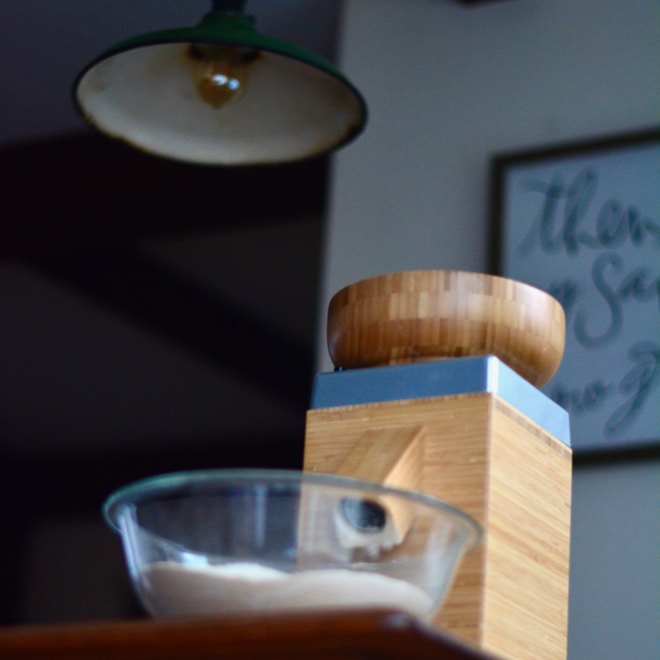
What wheat berries to use for bread flour
Hard white wheat and hard red wheat are both great options to make bread flour. If you want to replicate a true “bread flour” from the store, add 1 teaspoon of vital wheat gluten to every cup of flour you use in a bread recipe. This will help your bread develop a strong gluten structure (good gluten= good bread!). Ancient grains like spelt, einkorn and kamut can be used to make bread, especially with the added help of vital wheat gluten, but soft wheat should never be used to make yeast bread–it will not rise and won’t develop gluten.
What wheat berries should I make pasta with?
Traditionally, pasta is made with Durum wheat. That’s because durum is a super hard wheat that helps create the perfect “chew” factor in al dente pasta. Keep in mind, however, that kamut is very closely related to durum and acts as a good substitute for durum. And, technically almost any wheat berry can be successfully used to make pasta, including hard red and hard white wheat, einkorn, spelt, and even soft white wheat. Chickpeas can be ground into flour and made into a high-protein pasta as well, although it tends to create a dry, more strong-flavored pasta.
Choosing the right wheat berries: What wheat berries make all-purpose flour?
My favorite way to create an all-purpose flour with wheat berries is using a combination of 50/50 hard white wheat berries and soft white wheat berries. This blend will work in almost any baked good recipe, and will remove the worry of using exactly the right wheat berry for whatever you’re making. The only thing I wouldn’t use this blend for is bread, but it’s great for everything else.
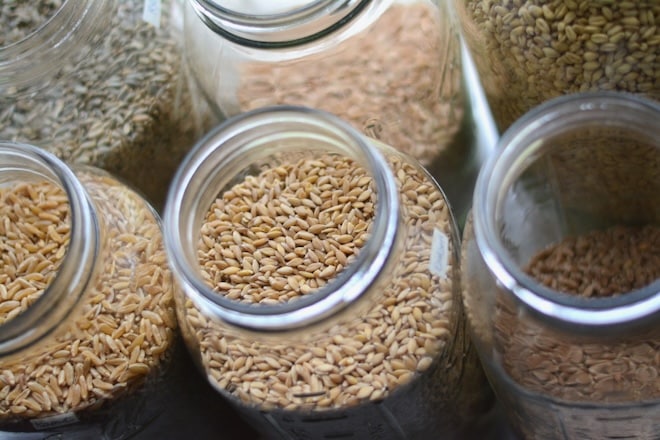
How to use wheat berries and where to buy wheat berries
Wheat berries can be used lots of different ways and (thankfully) are becoming easier to find in stores. Some great options for using wheat berries include;
- Cooking wheat berries like rice
- Milling wheat berries into flour
- Sprouting wheat berries to add to salads and soups
- Puffed and used as a cereal (although this is tough to do at home)
- Flaked and added to granola bars or cooked like oatmeal
Some great places to purchase wheat berries would be at your local specialty/natural food supplier, at some bulk food stores like restaurant supply stores, from local farmers and growers (you might be surprised what’s grown and available right in your neighborhood!), or online. My favorite source for bulk wheat berries is Azure standard. I can’t purchase wheat berries anywhere else for even close to the price of Azure.
Choosing the right wheat berries: What wheat berries should I buy as a beginner miller?
My best advice to brand new millers is to keep it simple. If I were starting my milling journey all over again, I’d start with three basic wheat berries. This gives variety and some options to try out right off the bat, but isn’t so much that it’s completely overwhelming. My advice would be to choose one wheat berry in three categories; choose a hard wheat, a soft wheat, and something fun/extra to play around with (an ancient grain would be great).
This allows you to use the hard wheat for breads, the soft wheat for pastries, and the ancient grain for anything else. My personal choices in these categories for a beginning miller would include;
- hard white
- soft white
- barley
Another great lineup option would be;
- hard red
- soft white
- einkorn
Simple, basic, but covers (pretty much) all your bases.
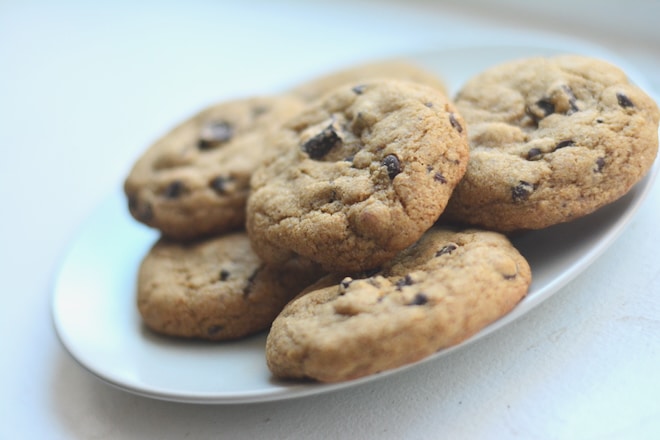
What wheat berries should I use in cookies?
Many folks advise using soft white wheat in cookie dough. Although that advice isn’t wrong, I find better success when I use a harder wheat in cookies. Any ancient grains are a great option, like spelt, einkorn, kamut, or–my personal favorite for cookies–barley. Hard red and hard white are also great options for cookie dough.
Choosing the right wheat berries: What wheat berries to use in muffins
I stick almost exclusively with soft white wheat berry flour to use in muffins. That’s just because that’s what seems to work the best for me. Other great options for muffins would include spelt, einkorn, and kamut. Just avoid using hard wheat flour in muffins, which would result in a dense and gummy texture thanks to the strong gluten potential in hard wheat.
What grain mill makes the best flour?
In the market for a grain mill? In a nutshell, these are the mills I’ve personally used and recommend:
- The Classic Nutrimill is great for making bulk flour at a great price point. (Code “soulyrested” to save cash!)
- The Harvest Mill wins for most beautiful to sit on your counter. (Code “soulyrested”)
- The Impact Mill is a great for folks who are new to milling and is by far the most affordable & compact mill! (Code “soulyrested”)
- And the Mockmill is a beautiful workhorse that wins for best engineered, best at milling alternative grains, and the best at producing great flour, every time, but it also sits at the highest price point.
More information about wheat berries and fresh milled flour:
- Why I started milling my own flour
- Sourdough with fresh milled flour
- Fluffy 100% whole wheat dinner rolls with fresh flour (recipe)
- Wheat berries: everything you need to know
- The ultimate guide to choosing a grain mill
Pin this for later!
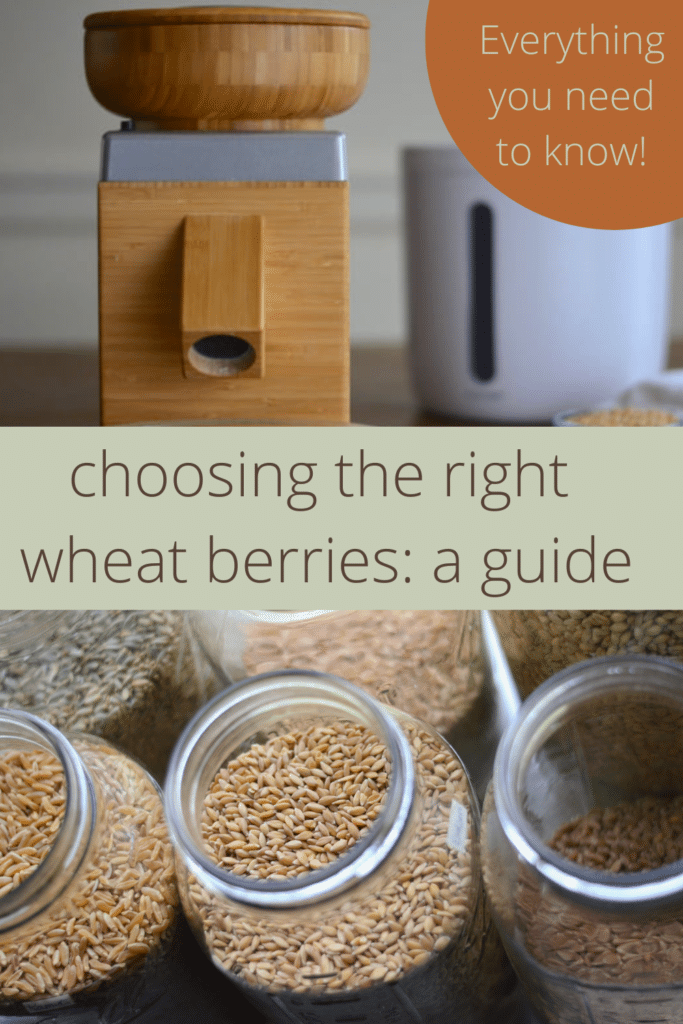

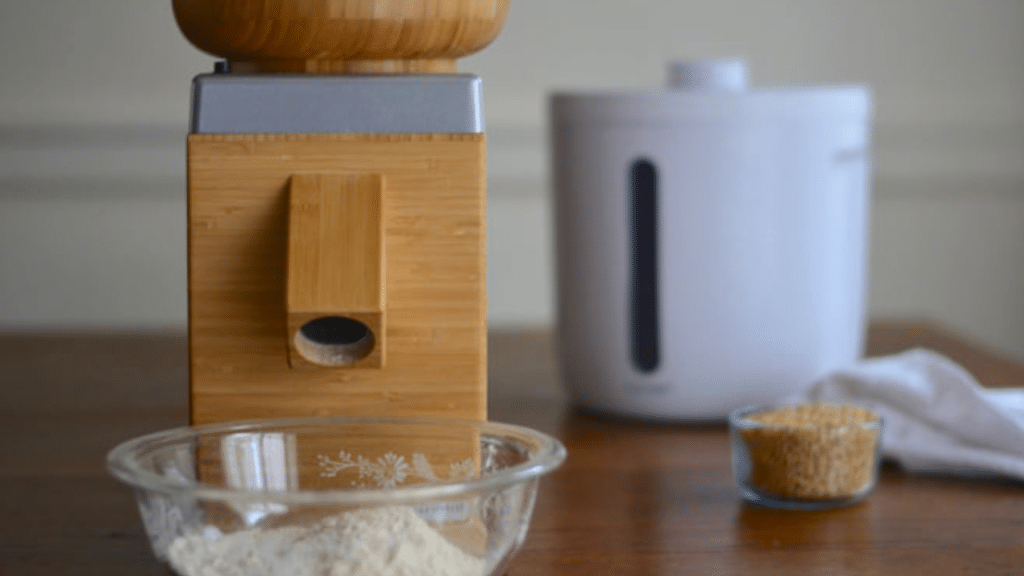



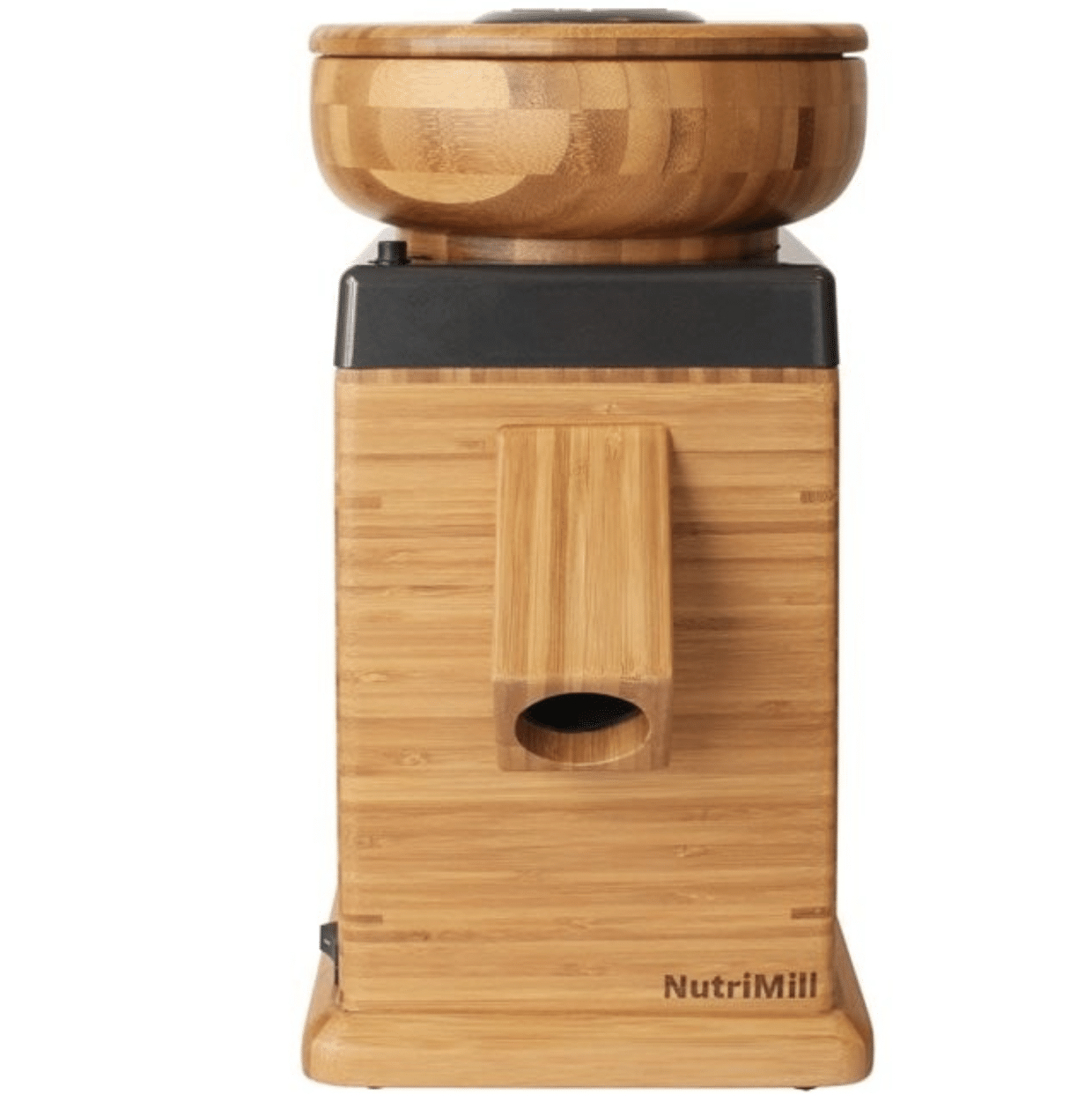
I have only purchased hard white and soft white berries. I have always wanted to try others…just afraid I won’t like them and will be stuck with them. Thank you for the article!
I have never met a wheat berry I didn’t like. 🙂 Seriously, I love having a great variety on hand.
So thorough and all in one place! I love it! This really takes the guess work out of the equation. Once again, thank you for sharing your knowledge to the homesteaders that are newer to this world. 2025 is the year I begin to tackle bread making. My husband does the IT for La Boulangerie/Shaw Bakers and I’m hoping to one day work in their test kitchen to learn from the amazing French bakers. We get to eat a bunch of breads, baked goodies, and specialty croissant pastries and “pockets”….. But I want to learn how to make my own!
*Waves to the SoulSkilletz Crew 🍳*
oh that sounds amazing!
I mostly bake by mass/weight – especially since fresh milled flour is so much more voluminous than store bought. Do you know the conversion for the 1 tsp vital wheat gluten per cup of fresh milled flour to make bread flour?
Thank you!! I was just about to take a deep dive into wheat berries when this popped up. You answered every question I had!!
I’m so glad!!!
Such a wealth of knowledge! Cant wait to one day (hopefully 2025 will be my year) get a flour mill.
you’ll love it!